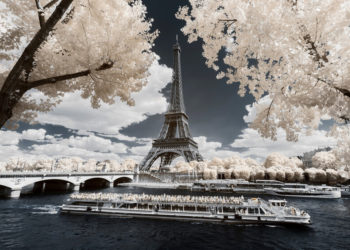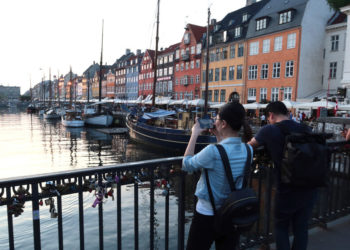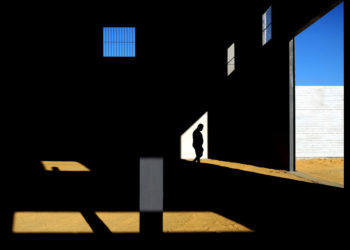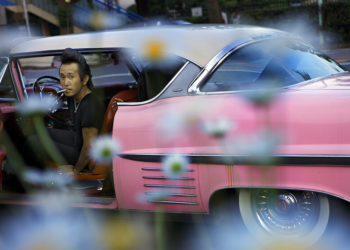home
>
Blog
>
Photography
>
Learn the steps to become a photographer with this guide
Learn the steps to …
You probably have your first camera in your hands and think “finally I can make the dream of learning to take pictures come true” until you stop for a moment in your reverie and realize that you have not the remotest idea of how to achieve it. Don’t worry, here we will give you a step-by-step guide.
It is true that there is no one way to reach a goal, but having some essential steps will always help. For example, to learn how to take pictures the first thing to do is actually take pictures. I know it sounds a bit obvious, but even if you don’t know much about theory, it’s still a good idea to practice and get to know the camera in your hands. Take out the instructions (it is not only used to fit a table) and learn its essential parts. It may also be a good idea to take a course where you know what every photographer should know.
Now that you have some tips, let’s go to what I promised you from the beginning: the definitive guide to becoming a photographer.
1. Learn basic theory
Once you have got to know a little about your new acquisition and have taken pictures with it, it is time to delve a little deeper. The automatic mode is not completely negative, but if you want to become a true photographer you need to master the basics that lead you to make your own shots.
Do you know if your camera has automatic bracketing functions? Or what is the fastest way to adjust the ISO? Knowing these features will allow you to quickly access the necessary functions as soon as you need them. Now, for this you will also need to know the limits of the team you have. How much aperture can you shoot and the shot is still sharp? they are important questions that you will have to review.
To know the above information, you can do a test: take a photo from a newspaper or some other form, most lenses have a “sweet spot” that makes shots sharper than the rest, identifying it can be very helpful.
2. Take photos
As we said earlier, you may not be an expert professional yet. But either way practice makes perfect. So do not miss the opportunity to take your camera out during a trip to the field, for example, or visit the city.
Something you must be very clear, only through many photos, trial and error, is how you will start to see improvements. So start and don’t stop. If you want an additional tip, in your learning process you can look for the work of your favorite photographers and write down what you like and what not in their photographs to try to reproduce what you consider interesting or important.
3. Know the basic concepts
Learning the three essentials can not be missed on your way to being a photographer, we are talking about: shutter speed, aperture and ISO. These settings determine how bright or dark the image is, as well as how focused it is. It may take some time to understand what each is about and how to handle it, but in the end it will make all the difference.
Along with the exposition, you also need to learn focusing and composition techniques. It is only through these techniques that you can take photos where you have creative control, to finally take the step from beginner to professional.
4. Master the light
A fundamental element in any photo that is incredible is light, we assure you that this makes the difference between a good photo and an incredible one. Finally the root of the meaning of photography comes from the Greek and means writing with light.
It is true that sometimes you can be lucky and find a shot where there is good light, but to be a professional you need to be able to set the conditions to achieve that shot with a little more than just luck.
Mastering light does mean learning to take photos on any stage, regardless of lighting. For example, how do you shoot with the sun behind the central object without ending up with a silhouette? o How do you intentionally use the backlight to create a silhouette? Do you know how the side light differs from the front? are issues
In addition, it is not enough just to know where the sun has to be to achieve a perfect photograph, it is also necessary to know where to put and how to use a flash light or a reflector. Will it be necessary to buy a very expensive light kit or will something smaller be enough? These are all fundamental questions, for which it can be very helpful to take an online course such as: photographic lighting techniques.
5. Rehearse your style
If you decided to buy a camera it is because you surely had in mind some idea about what you would like to photograph, it could be landscapes, portraits, sports or even products for e-commerce. The possibilities are vast.
Regardless of which path you like the most, remember that it can also be useful to nourish yourself from other fields, for example perhaps your photography is fashion photography, but you can take photo sessions with newborns, which are very popular nowadays.
If what you want is to have jobs as a photographer it will always be a great help to have different spots to target. Even if you live in an area where you know there are many taking wedding photos and few people taking portraits, there is a good area of opportunity there.
Don’t forget that each type of photography requires specific skills. Those who make portraits need to learn the art of posing and if you are a wedding photographer you will have to know how to make the best shots during a ceremony with the sun at sunset.
6. Learn editing
Both taking photographs and editing them can be considered arts in themselves. However, we assure you that it will be useful to have some editing bases to be able to touch up the photos that you yourself take. In fact, you could give yourself a different and more complete perspective of your work.
The most popular programs to do this work are Photoshop and Lightroom, it is true that it takes some time to master them, but as with everything else it is best to go step by step and start from the basics.
7. Seek an opinion
Here comes one of the most difficult parts. You have already come this far, you have learned the basics and even a little more and surely you already have many photos to your credit. It is time to go out into the world (or turn to social networks) and ask for an opinion. There are many ways you can ask a teacher, join a group or upload your work to social networks and ask openly.
It is true that many times it can be difficult to know opinions that are not so positive, but it is necessary to know where you have to go and the things that you can improve. Keep in mind that not all opinions help you, especially perhaps at this point technical comments are more useful since if someone tells you that they felt sad about your photograph, but that is what you wanted to achieve, it will not really be information from value.
8. Create your portfolio and spread it
Who has not dreamed of their work being exposed in some advertising medium or campaign? How can I get to offer my work to brands? are questions that maybe you have asked. The simplest and most direct answer is: start by creating your portfolio, upload it to different social networks and this is how you can gain followers and, eventually, exposure to the brands of your interest.
Start following these steps now and you will see how in a short time you can show your photos to the world.








Discussion about this post